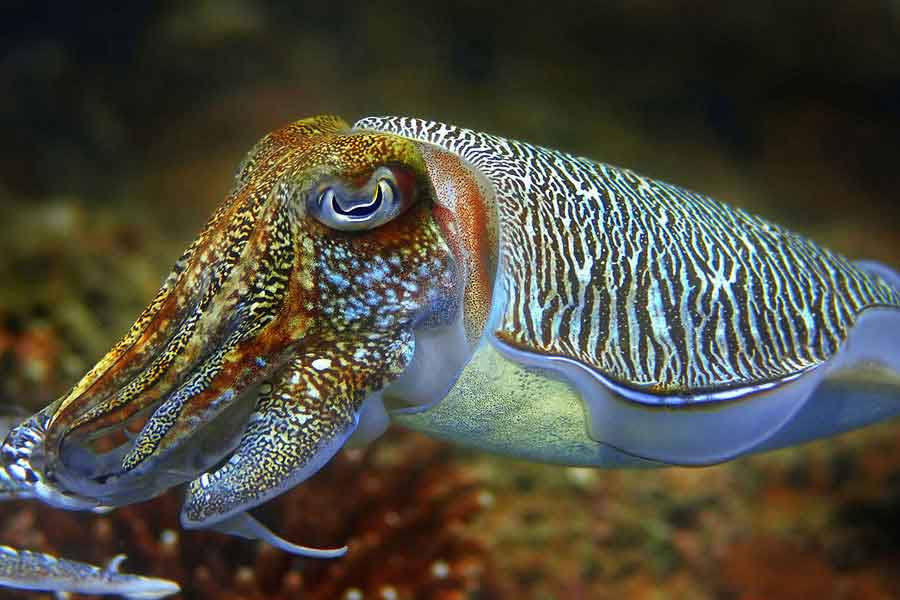
Cuttlefish, the lesser-known cousins of octopuses and squids, are content with being the underdogs of the family. In fact, they have developed a method to completely blend in with the ocean floor.
The basis of this method lies in cells called chromatophores, which are filled with pigments of red, yellow, and black colors. These cells can contract or expand within milliseconds, allowing their bodies to change color, display stripes or spots, or even camouflage with the background color. This is especially relevant considering that cephalopods cannot distinguish colors of the background. They also use these color changes, along with body postures, to establish a form of communication. In some species, 31 color variations and over three hundred designs affecting the entire body have been classified.
Normally, they spend their lives on the ocean floor, concerned with remaining inconspicuous. However, when the time for mating arrives, the instinct for reproduction becomes stronger than the fear of being eaten. The males, approaching a group of females, start displaying truly incredible visual signals: their skin takes on a striped coloration similar to that of zebras, but the stripes are not static, they move along their bodies like neon lights.
The females, attentive to these displays, remain with their mottled coloration. If a male fails to perform these color changes, perhaps due to being sick, and remains mottled, it could be mistaken for a female by the other males.
Once a female is chosen, the male must drive away the competition from his territory. To achieve this, he adopts aggressive postures. The matter is resolved quite simply: the largest male stays with the female, whom he still needs to convince. For this purpose, he begins gently caressing her between the eyes with his tentacles. Initially, the female may show signs of alarm, which she manifests through a chromatic pattern indicating a certain degree of agitation. The male soothes her by gently blowing water with his propulsion mechanism. If, at that moment, another male tries to snatch the pair, the dominant male can keep the side of his body where the female is located calm in color, while displaying aggressive patterns on the side facing the visiting male, prompting him to flee the area.
Once the female is convinced, they mate and return to blending in with the background. Shortly after, the offspring of this fleeting union are born. But that, that’s another story…
«You cannot defend what you do not love, and you cannot love what you do not know».»

